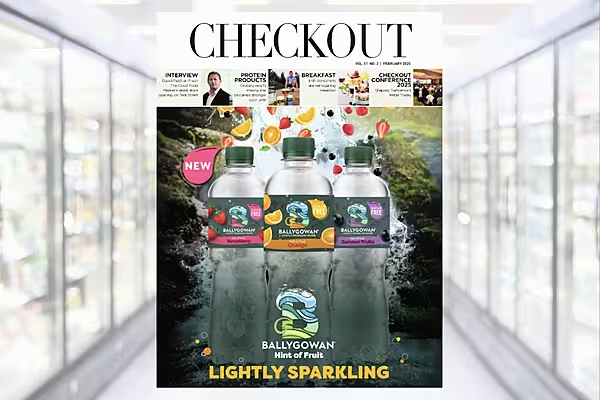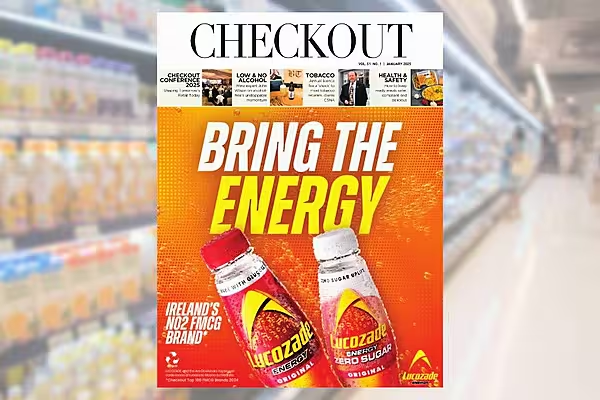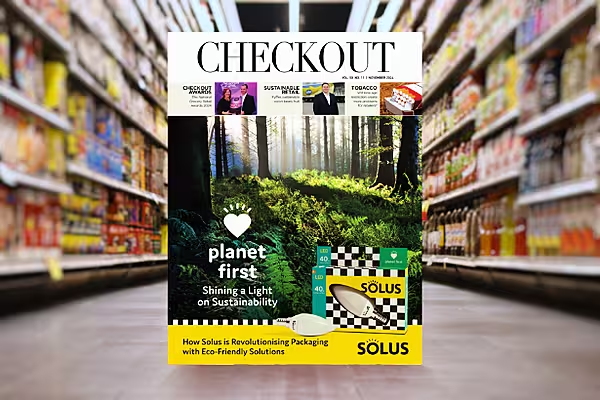Deirdre O’Donoghue may be just six months into the job as country manager, Ireland, at Nestlé , but she has already set her sights on establishing the world’s biggest food company as a market leader in every category in which it competes here. Stephen Wynne-Jones met her. This article first appeared in the September 2013 edition of Checkout.
When it comes to food, Nestlé are top dogs. The Nestlé portfolio, taking in confectionery (including Kit Kat, Aero and Rowntree’s, to name but a few), breakfast cereals (including Cheerios and Shredded Wheat), coffee (Nescafé, Dolce Gusto, Nespresso), pet care (Purina), and a broad scope of other products including Herta frankfurters and Carnation condensed milk, is the broadest of all the mainstream players in the Irish market, echoing the company’s self-styled status as ‘the biggest food company in the world’.
Deirdre O’Donoghue, appointed as the new country manager for Nestlé in Ireland earlier this year, understands the specific challenges in applying a global portfolio to a local business, having held a variety of marketing and commercial leadership roles for Nestlé around Europe, including its headquarters in Vevey, Switzerland.
“Working in Switzerland, you really can experience how Nestlé manages the complexity of so many categories across so many geographies,” O’Donoghue explains. “When you’re at the heart of it, you see how it is managed with quite a light touch in each of the markets it operates in. Nestlé Ireland, for example, is completely centred towards the Irish consumer and shopper, but in a way that links it back to the headquarters.”
The breadth of the Nestlé operation is reflected in the fact that before taking the senior role here, O’Donoghue’s previous position was as general manager of confectionery for the Ukraine and Moldova. As she explains, while many of the brand names stocked in both countries may not be that dissimilar to those here, the nature of the business is anything but. “For instance, the trade structure was very different,” she explains. “Only 20% of the businesses you were dealing with were modern group supermarkets, and 80% were really small shops, all independently owned. Also, the economy was very volatile. There is no middle class – at least not in the way we would consider middle class.
“How do you handle that volatility? You have to be much more hands-on in terms of how you handle the business. So there are products that meet the needs of consumers in these emerging markets. If you only have 20c to spend on confectionery, there is something there for you. Pick ’n’ mix is very big in Ukraine, for example, so we need to put our brands into that mix. You evolve the business model to suit the needs of the market.”
Irish Market Conditions
Having worked for Nestlé outside of Ireland since 2000, O’Donoghue relished the opportunity to take on the role of country manager, following the departure of Oliver Sutherland to Valeo Foods in January. Having gained firsthand experience of challenging economic conditions in Eastern Europe, she understands the impact of things like the Local Property Tax on consumer confidence, but believes even setbacks such as this offer an opportunity to grow the Nestlé portfolio.
“Consumer sentiment in this country is extraordinarily fragile. There is money there, but people are worried about spending it. Following the LPT, consumer confidence in April just dropped like a stone, but when there is a bit of good weather, it rises again.
“For companies like ourselves, it’s difficult out there, but we have to keep on innovating, making sure consumers get value for money and meet consumers’ needs. If consumers want to spend, we need to be the ones offering brands and propositions that they want to spend their money on,” O’Donoghue says.
Meeting Consumer Demand
One of the brands that perhaps tapped best into the current mindset was last year’s launch of Nescafé Azera, a ‘barista-style’ coffee aimed at the consumer who still wants a premium product first thing in the morning, but doesn’t have the spare cash to spend at a local cafe. Coffee is one of the areas in which Nestlé has positioned itself effectively in all tiers of the market, from the everyday Nescafé Gold Blend to the super-premium Nespresso brand, on sale in Brown Thomas. Both Azera and newly launched pod-coffee brand Dolce Gusto occupy the market in between.
“We find there’s no such thing as a wholly Azera customer or a Dolce Gusto customer,” says O’Donoghue. “Rather, people will buy a range of coffees depending on what situation they are in. On a weekday evening, they may have an Azera, but when their friends are over at the weekend, they might have a Dolce Gusto. It’s our role to meet those needs.”
In confectionery, too – arguably Nestlé’s strongest area – the company has shifted its focus to cater for consumer needs while trading off familiar brand names. “Even in a major category like confectionery, you need to ensure that as consumer needs change, you can evolve your product offering and brand offering to meet those needs,” she explains. “It’s all about insight. Everything we do is driven on insight. What we look at first is not what people are doing in terms of confectionery, but what is driving consumer needs. Are they worried about future employment prospects? Or are they looking for more premiumisation? Another thing we increasingly do is work more closely with consumers, combining what the retailers are doing with our own insights to help build our brands, looking at how we can capitalise on these trends and push categories forward.” With Nestlé having such a global presence, how much autonomy does its Irish operation have on strategy, particularly in a major category like confectionery?
“Some of our brands are internationally driven. For instance, Kit Kat is a global brand, so a lot of markets feed their information into the centre. Aero or Yorkie, however, would be more Ireland and UK brands. We work closely with the UK team. We have insights and marketing people here that work with the insights and marketing people in the UK. So, with Aero, a lot of the planning comes from the UK and is applied to the Irish market, while with Yorkie, because it’s so powerful here, a lot of the thinking comes from Ireland and travels across to the UK. It really depends on where the strength of the market lies.”
The Right Message
Marketing spend is also key to establishing Nestlé brands as market leaders in their respective categories, particularly with the rise of private label, although O’Donoghue admits that own-brand “doesn’t really play” in Nestlé’s biggest categories, confectionery and coffee. According to figures from Nielsen, Nestlé’s ad spend (through TV, radio, press and outdoor) in H1 2013 increased by 15.3%, compared to the same period last year. This is not dissimilar to the increase in spend by its confectionery rival, Mars (+17.9%), however, other market-leading players, such as Unilever (-11.7%) and Coca-Cola (-6.9%), have lowered their spend. One of the key campaigns unveiled this year was one for the nostalgia enthusiasts, as the Kit Kat Pandas returned to our screens. “The core idea for Kit Kat is putting a smile into your break. The Panda ad is absolutely core to Kit Kat’s value. You watch it and you invariably smile, whether seeing it after 25 years or for the first time.”
The newest additions to the Nestlé confectionery portfolio, under the Wonka sub-brand (Wonka Millionaire’s Shortbread, Wonka Chocolate Nice Cream and Wonka Crème Brûlée), are also adopting a ‘playful’ marketing stance, on the back of consumers’ long-standing familiarity with the brand. Some 70% have read Roald Dahl’s Charlie and the Chocolate Factory, while 83% have seen the original film starring Gene Wilder, and 85% have seen Tim Burton’s version.
Offering Solutions To Consumers
At the same time, one of the key trends in FMCG at the moment is positioning brands as ‘solutions’, with marketing and merchandising tailored to the individual needs of consumers, rather than the traditional one-way advertising message. As with the positioning of Azera and Dolce Gusto, O’Donoghue and her team need to ensure that this solutions mindset is carried across the portfolio. “People are very busy, and they want brands to fit in with their needs. With a brand like Maggi, which is a culinary aid, we place it next to the fresh butcher’s counter in-store, and from talking to butchers, we have found that it has increased their sales significantly. Similarly, with the rise in home baking, something like 60% of banoffi pies are made with condensed or caramelised milk, so we built in-store displays with biscuits and our Carnation condensed-milk brand. “
From a retailer point of view, they have to see their category sales increase, not just the sale of individual brands. Our brands have to play a role in that.”









